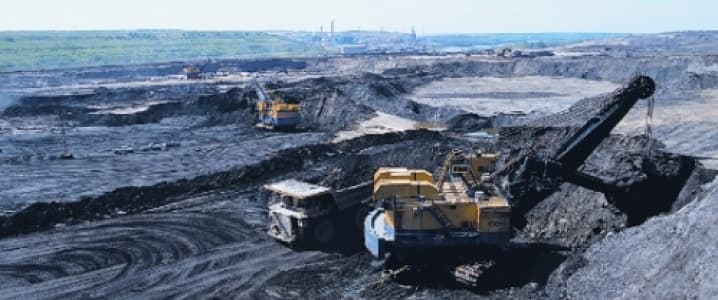The election of Donald Trump as President of the United States has a lot of implications for a lot of different segments of the economy – coal may not be one of them. The uphill battle for coal in the U.S. appears to be getting even steeper with Western States starting to increasingly look to natural gas and renewable energy for power consumption rather than coal. Moreover, the change is being driven by economics rather than regulatory requirements or concern over the environment.
President Trump will have a lot of power – power to enact new rules, power to push new legislation, and power to remove old regulations. None of that will help to change the fundamental economics of coal which are increasingly pointing to more mine closures. Renewable power is consistently becoming cheaper, and the glut of natural gas continues to make it one of the most affordable power generation sources available.
Appalachian coal has been in trouble for years because it is relatively expensive to extract that coal from the ground. In comparison, the Powder River Basin coal in Wyoming is comparatively cheap to mine. Wyoming has vast deposits of easily accessible, low-sulfur coal, and that has historically been a significant source of power generation for many of the Mountain West states. In 2015 for instance, roughly half the region’s power generation was coal-fired. A decade ago, those states got nearly two-thirds of their power from coal. Related: Natural Gas Drillers Rush To Hedge Production As Prices Soar
Now to be fair to coal, it may be dying, but it is still a powerful dying giant. Today coal is still responsible for nearly 33 percent of energy production. Wyoming in particular is still a major producer, and it has closed fewer mines than West Virginia or Kentucky. In 2014, Wyoming produced 40 percent of the nation’s coal. In contrast, the entire Appalachian region produced only 27 percent of the country’s coal. That’s largely because of low mining costs – Powder River Basin coal sells for roughly $10 per short ton compared to $45 per short ton for coal from places like KY and WV.
Yet at the same time, the fact that so much economic angst has come from the shrinking size of coal should be frightening. Coal has only lost a small part of its dominance – it has ceded perhaps 20 percent-30 percent of its generation share. That means that if the black rock continues to lose ground, 70 percent to 80 percent of the pain is still to come.
(Click to enlarge)
Trump can do little to change the structural advantage that Wyoming has over the Appalachian miners, and he can’t change fundamental supply and demand. Indeed two of Trump’s proposals may even hurt coal production; reduced regulations on fracking (including natural gas), and an import tariff.
Reduced regulation on fracking will help lower costs for unconventional producers of oil and natural gas. The latter is particularly important because it is the primary competitor for power generation share versus coal. There is a lot of talk around renewables, but the reality is that roughly 90 percent of power generation still comes from conventional sources. Natural gas is coal’s most serious enemy rather than solar. The removal of EPA regulations will help coal, but it will also help natural gas which means that coal could continue losing share.
Equally importantly, there has been a lot of talk about new tariffs (or border adjustments) being put in place in the U.S. If that occurs, other countries will almost certainly respond in kind. That in turn could make it harder to export U.S. coal. Coal exports represent roughly 8 percent of production with the largest consumers being the Netherlands, India, and Brazil. If new tariffs are put in place, that could disrupt those exports turning off an important source of demand overnight.
The bottom line is that while President Trump may have a lot of power, and he may be able to help the economy as a whole and the energy sector in particular, the outlook for coal itself is still quite grim.
By Michael McDonald of Oilprice.com
More Top Reads From Oilprice.com:
- Oil Prices Steady After Slim Inventory Build
- Has The OPEC Rally Gone Too Far?
- Can The Canadian Oil Industry Recover In 2017?




















The author apparently doesn't take into account inevitable increase in energy consumption within the next 8 - 12 years. Coal and nuclear sources will be welcome.
It wasn't too long ago that the US went through this and Natural Gas went through the roof and the gas generating units went offline.
We look forward to a President that understands people and economics. If America is free to stretch it will expand and this expansion will create more demand for electric.
By this time a year from now you will see the effects. The coal plants that are left that haven't been closed or shutdown will be at their max to support this and every other idiots predictions. Doom and Gloom will not change the rest of us that think there is room for clean coal and know who has paid for all the green power. Are you including cost analysis if these tax payer funded programs were to end and coal generation suddenly looked so much better? We in the coal industry have seen it over and over. Coal has built this country and will continue long after we are all in the ground...